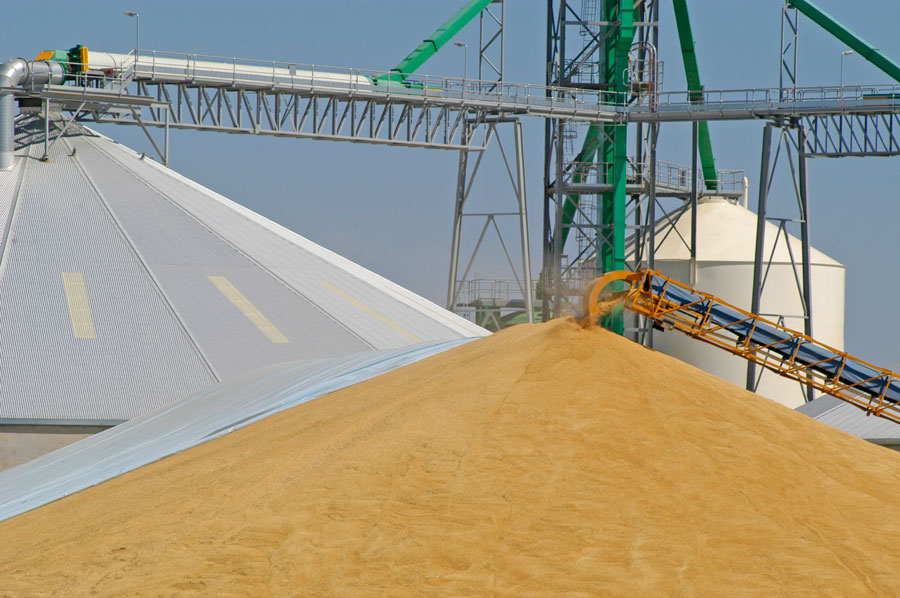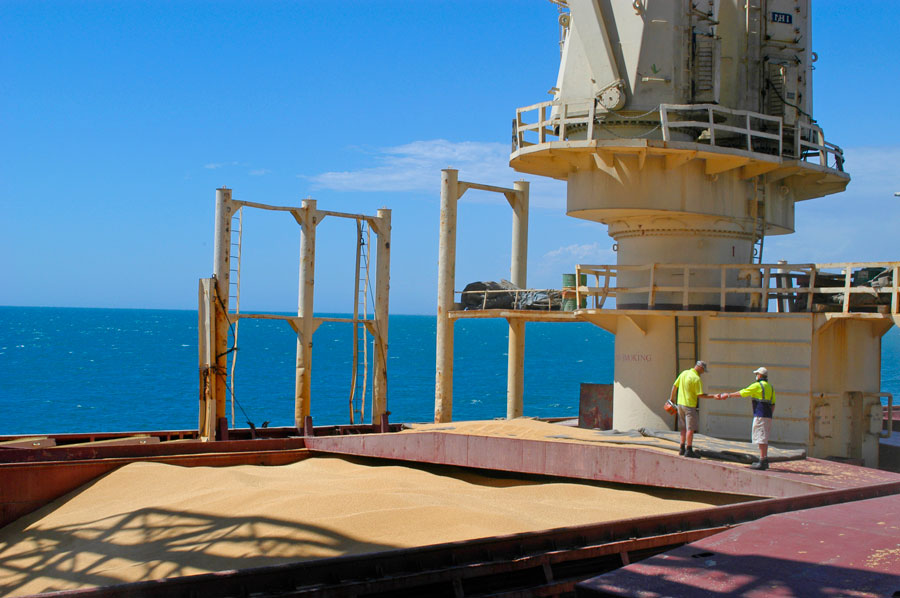When you are standing thigh-deep in ripened wheat, the satisfaction from having nursed another crop to harvest – against all the challenges – can be a fleeting pleasure, muted by what comes next. The questions: who is buying and what are they paying?
All of a grower’s work, knowledge and experience – all of the time, effort and millions of research dollars necessary to keep grain growing productive and profitable – come down to the transactions now to take place along the supply and value chains.
Global grains markets have never been more competitive or more open to all, with prices for commodities effectively set by countries and regions with the lowest production and infrastructure costs.
This is the cutthroat reality of today’s export grain trade – and it becomes part of an extra challenge for GRDC. A broadened responsibility that complements its baseline research and extension with greater understanding of diverse markets, new products and consumer demands is the additional role that new managing director Anthony Williams is scoping out.
Mr Williams takes the GRDC helm after a long, successful career in the global agrifoods sector, initially with Goodman Fielder and then in general management and strategic business development roles with multinational Bunge Ltd. He was responsible for Bunge’s $1.2 billion global grain milling business, then its $2.6 billion North American food oils business.
He now brings these corporate credentials and trade and product development insights to GRDC – to what he terms the Australian grain industry’s “innovation department”.
His goal is to help strengthen Australian grain production by complementing the existing spread of core research investments underpinning production with research that also increases the value of the national harvest and puts more money into Australian growers’ pockets. For him this is not a feel-good line but the very basis for being in business.
“I have returned to Australia when agriculture here has been set a goal of becoming a $100 billion sector by 2030. I can see grains contributing $30 billion of that – double the value of the industry today,” he says.
“There is great momentum already generated through GRDC’s five-year Research, Development and Extension (RD&E) Plan to 2023 and I simply see my commercial background as helping to push this harder.”
In broad terms, given he is spending the early months of his tenure meeting growers and others in the industry to sharpen his and his GRDC team’s thinking, Mr Williams sees opportunities in more-differentiated product streams that directly target higher-paying customers. In the coming months, particularly when he meets growers, he is keen to discuss the stronger competitive position that comes from aligning the business of growing grain closer to the business of using that grain.
“If you take a satellite view of the commodity grain trade today, it is really a single global market in which everyone is now competing – among them some highly efficient, very-high-volume, low-differentiation producers. This includes the Black Sea region, North America to a degree, and definitely South America. They all have the production scale and infrastructure scale that makes them competitive enough to negate any geographic advantages Australia once enjoyed, such as proximity to Asia markets,” he says.
“So in this one, big, global market into which everyone is selling, how do we differentiate ourselves? From that satellite perspective, what does the Australian research, production and marketing strategy need to look like?” he asks.
“We know we can’t be ‘the biggest’, but what does ‘the best’ look like? Do we need to let go of the commodity way of thinking and look to be seen, and valued, more as a producer of differentiated ingredients for a diversity of food, food manufacturing and even industrial markets?”
Mr Williams’ reference to ‘ingredients’ and specific consumer sectors is a considered point based on his experience overseeing Bunge’s customer-focused product development and business growth.

Mr Williams sees opportunities in more-differentiated product streams that directly target higher-paying customers. Photo: Brad Collis.
Speaking from experience
He has been down this road, dealing in the oilseeds value chain with the largest snack foods and confectionery brands – Mondelez, Ferrero, Nestle, Hershey’s, Barry Callebaut, PepsiCo, Bimbo Bakeries: “As food manufacturers with multi-billion-dollar food brands, their brand protection and risk-management drivers back up much further into the value chain than people realise. As manufacturers, they have the ear of the consumer, whose needs are the primary driver of value capture. So, as commodity producers, having the ear of those manufacturers gives us some valuable insights that can underpin our RD&E growth investment strategies.
“It doesn’t mean you have to change your whole market, but you can change some of the anchor international and major domestic players you work with in a market and they will be big enough to justify a new efficient and differentiated product flow.
“For example, when we were looking at our wheat milling strategy for Bunge in Europe, part of the initial challenge was being asked ‘why focus wheat into a market that’s not a net importer?’ But we were not looking at the market as a country. Rather, we were looking at a customer and where it shipped its products.
“So Mondelez, for example, has a facility in the Czech Republic that makes Belvita biscuits and ships them all over the world. They also have a manufacturing facility in Spain that ships particular types of Oreos all over the world. You can walk into shops in Australia and the Belvitas are made in Czech Republic and the strawberry-flavoured Oreos are made in Spain and some other Oreo varieties are made in Indonesia. So supplying those manufacturing facilities isn’t supplying a local market, but a global market. That single customer gives you access to the global distribution footprint of its finished product.
“It’s a whole other way to look at the global marketplace – how it is possible to market your differentiation, in commodities, at optimal scale, and to people who will pay.”
In looking at GRDC’s position and role against this backdrop, Mr Williams recognises its core competencies and areas of research investment that are critical to growers year-in, year-out. He says that will remain a key part of its fundamental role: “But I am also hoping that growers are expecting us to be looking at the future, looking down the path ahead, talking to people about how we drive up price. How do we penetrate an attractive destination export market that we identify?”
He says this flows back on to research investment decisions if, for example, there emerge opportunities to create more value by investing in crop varieties that can be grown at scale and still satisfy differentiated, higher-value, global markets.
It might well be a niche proposition, he says, but it is all relative: “The number of people Australian farmers can feed is about 80 million. If we double this over the next 30 years that’s still only 160 million in the same time frame that the world’s population is reaching 10 billion.
“So if we are only ever going to get two per cent of consumption, we have to ask, which part of the value strata should we be targeting? And then ask, how do I back that into what we should be growing, the logistics of this, how we market relative to our Australian grains brand, and then what is the R&D GRDC needs to put in place to support that value transition?”

Mr Williams says manufacturers have the ear of the consumer, whose needs are the primary driver of value capture. Photo: Brad Collis.
New commercial drivers
Mr Williams throws in a twist on the conventional end-user premise that says ‘the customer is always right’.
“Not always true,” he says. “The customer doesn’t always have the best information. That’s why they rely on world-class supplier partners. They should, however, be the centre of why we do what we do, because the customer does always pay. If you don’t have what they want to buy, it doesn’t matter how principled you feel, you’re no wealthier.”
By way of example, he adds: “Increasingly people are willing to pay more for ‘free from’ labels … free from chemicals, free from artificial elements.
“So how much more will they pay and how do we produce and deliver the right product portfolio and/or farming solutions that includes this? These are questions to be answered and they start with our commodity buyers. What are they prepared to pay more for, relative to ‘free from’; what are they prepared to pay more for relative to ‘value add’. This is a challenge. It means switching from thinking as a commodity marketer to an ingredients supplier.”
He points to palm oil with Roundtable on Sustainable Palm Oil certification costing up to US$50/tonne more at crude level. He says manufacturers pay this premium because consumer activism is today a key driver of commercial behaviour: “They pay to protect the value of the brand on their balance sheet and earnings on the P&L.”
Asked how Australia fits into these sorts of thought processes, he says it starts with having conversations with downstream processor and food customers. “For example, in our Mexico milling business, as a flour supplier to major customers like Bimbo Bakeries, we were looking for smarter ways to manage cost while leveraging the ‘standard’ commodity marketing and logistics processes. So we introduced near-infrared technology into the mill’s wheat receival process so we could separate a single parcel of wheat into different protein levels for different product lines. We were able to charge more to bakers who wanted a tighter protein spectrum and put other, cheaper grain into retail flour where protein levels are rarely noticed. We were able to maximise the value of both grain markets while buying at the lowest possible cost.”
In Australia, he sees an opportunity to look at some of the export flows and talk to grain handlers about putting technology into the right points of the supply chain to aggregate efficiently at this end, and use technology again at the end point to disaggregate to satisfy different customer needs in destination markets.
“But it’s not until you have these conversations and you understand what people are prepared to pay for, that you are able to open your eyes to ways of solving challenges other than via the normal spread of options.”

























































